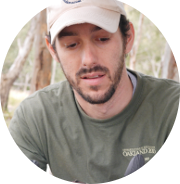-
Member Login
- Home
- About
- Institute Groups
- Membership
- Events
- News & Publications
- Institute Programs
- Resources
- Jobs Board
- Contact Us
- Site Info
Casey Visintin
Casey Visintin
Abstract | Validating collision model predictions with disparate datasets: a case for a unified system
Wildlife-vehicle collisions are often costly due to property damage and injury and have been estimated to kill billions of vertebrate fauna each year. Many studies use predictive modelling to determine where and when WVC will occur. These models are often trained on collision data that is sourced from non-government organisations, private-sector entities, academic institutions, government agencies, community groups, and individual citizen scientists. The data is not easily attainable and often have implicit biases and errors.
We analysed change in model performance by combining four disparate datasets of wildlife-vehicle collisions on roads in the State of Victoria in south-east Australia. For each combination of training datasets, we fitted a model, made predictions, and validated the predictions with independent datasets not used to train the model.
Using independent data from insurance claims to validate models demonstrated an increase in model calibration as more combinations of training data were used. Likewise, the variation in the data explained by the model also increased as more combinations of data were used.
We demonstrate that increasing the amount of collision data used for modelling, by combining datasets from different sources, has the potential to improve model performance and predictive strength. These results highlight the importance of uniting the currently disparate sources of collision data with a comprehensive and systematic archive. We also suggest qualities that are integral to the success of such a system.
Bio | Casey Visintin
 Casey Visintin is trained as both an architect and wildlife conservationist and his research explores impacts of the built environment on ecological systems. He develops quantitative models to perform risk assessment and support environmental decision making. His work draws from several areas of expertise including species distribution modelling, transportation modelling, risk theory, data science, wildlife management and conservation planning. In his current work, he models the risk of wildlife-vehicle collisions and makes predictions to help guide management. In an effort to make roads safer for animals and humans, he aims to leverage mobile-device technology to influence driver behaviour by communicating risk in real-time.
Casey Visintin is trained as both an architect and wildlife conservationist and his research explores impacts of the built environment on ecological systems. He develops quantitative models to perform risk assessment and support environmental decision making. His work draws from several areas of expertise including species distribution modelling, transportation modelling, risk theory, data science, wildlife management and conservation planning. In his current work, he models the risk of wildlife-vehicle collisions and makes predictions to help guide management. In an effort to make roads safer for animals and humans, he aims to leverage mobile-device technology to influence driver behaviour by communicating risk in real-time.
We acknowledge and value the rights and interests of Indigenous Peoples in the protection and management of environmental values through their involvement in decisions and processes, and the application of traditional Indigenous knowledge.

